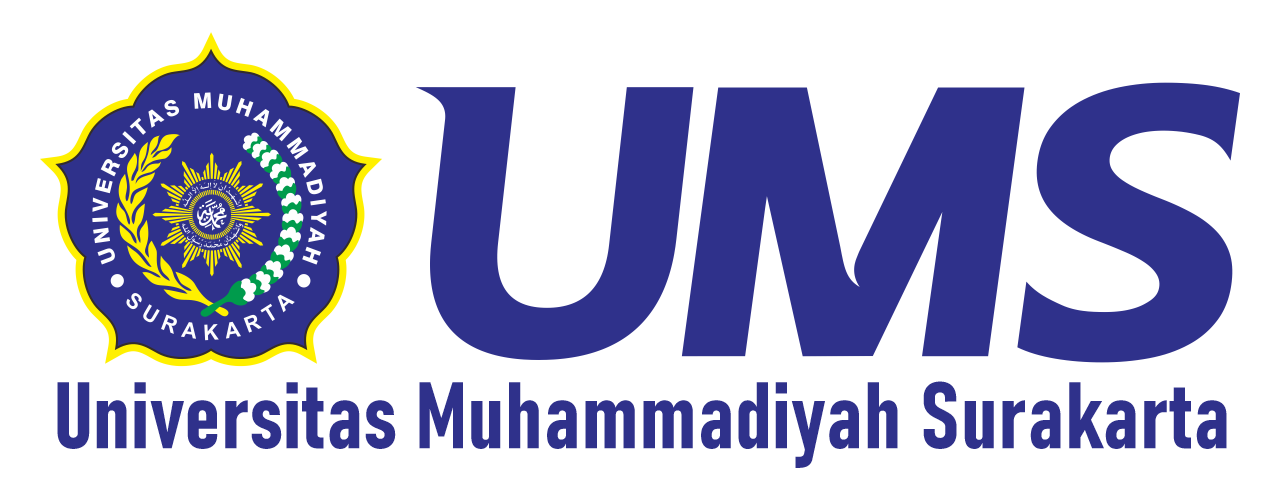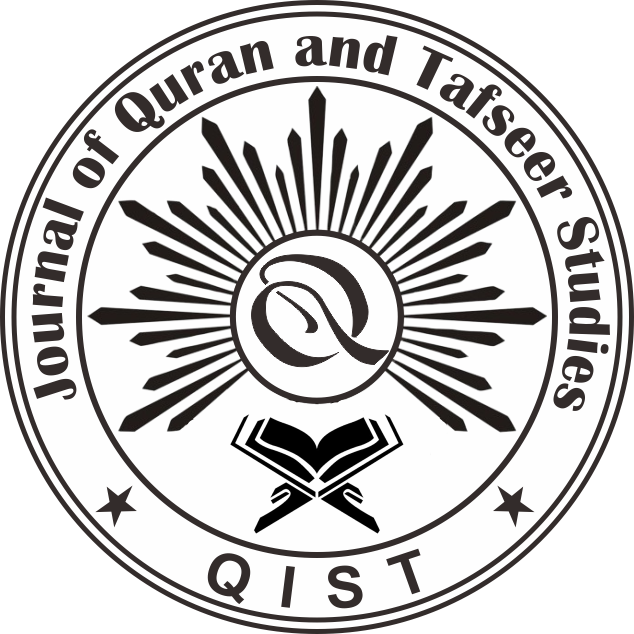Human Fingerprint Study from Zaqlul An-Najjar's Perspective with the STIFIn Method: Study of the Meaning of Banan in the Qur'an
DOI:
https://doi.org/10.23917/qist.v4i1.8440Keywords:
Human Fingerprint, Zaghlul an-Najjar, STIFIn MethodsAbstract
The era of digitalization with access using fingerprints has very important aspects in various fields. This study aims to describe the relationship between human fingerprints and scientific interpretation from the perspective of Zaghlul an-Najjar and the STIFIn method. This study uses a descriptive qualitative method with a library research approach. The data collection techniques carried out are documentation techniques and literacy techniques. The data analysis used is content analysis. The steps used are to select, compare, combine, and sort various meanings until relevant data is found. The data validation technique used is source triangulation. The result of this study is the correlation of Zaghlul an-najjar's perspective which focuses on the interpretation of 'ilmi with the interpretation of patterns that seek to reveal the relationship between the kauniyah verses in the Qur'an and the field of science to show the truth of the miracles of the Quran. The perspective of Zaghlul an-najjar Fingerprints in Q.S Al-Qiyamah verse 4 is the relevance of miracles developed by modern science in the late 19th or early 20th century. Zaghlul interprets that fingerprints are human identities that will not be the same for each individual and are also under the verse of human creation. Meanwhile, the STIFIn method is an alternative approach to analyzing human intelligence based on fingerprints and brain dominance. STIFIn has five intelligence components: Sensing, Testing, Intuiting, Feeling, and Instinct. STIFIn is used to understand one's potential, the STIFIn method can help a person choose a more appropriate learning style, career, and self-development. In practice, the STIFIn method has implications according to the Islamic concept, namely Human Fitrah (QS. Ar-Rum: 30), the uniqueness of human beings (QS. Al-Hujurat: 13), and Psychology in Islam.
References
[1] N. N. Amalia, Diana Durrotul Lum'ah, and Asbarin, "Tafsiran Lafadz Khusyu' Perspektif Aisyah Bintu Syathi' (Tinjauan Kitab al-Tafsir al-Bayani Lil Qur'anil Karim)," Al-Fahmu J. Ilmu Al-Qur'an dan Tafsir, 2023, doi: https://doi.org/10.58363/alfahmu.v2i2.83.
[2] M. Hendra and M. Rezi, "Konsep Penciptaan Bumi dalam al-Qur'an (Studi Terhadap QS. al-Anbiya' [21]: 30) Menurut Hamka dalam Tafsir al-Azhar," J. Tafsere, 2021, doi: https://doi.org/10.24252/jt.v9i1.30988.
[3] M. Ad-Darwisy, I'rab Al-Qur'an al-Karim wa Bayanuhu. Suriah: Dar Ibn Katsir.
[4] U. Abdurrahman, A. N. An, A. Rhain, A. Azizah, Y. Dahliana, and A. Nurrohim, "AL-AFKAR: Journal for Islamic Studies Perdebatan Kategori Ayat Dakwah Qs. Ali Imran Ayat 64 Antara Buya Hamka Dan Mufassir Nusantara," al-Afkar J. Islam. Stud, vol. 7, no. 1, pp. 189–206, 2024.
[5] P. K. Bose and M. J. Kabir, "Fingerprint: A Unique and Reliable Method for identification," J. Enam Med. Collage, vol. 7, no. 1, 2017.
[6] S. Rasaneh and A. Sepahvand, "A Model from the Quran for the Brain Physical and Mental Healthy," J. Quran Med., vol. 7, no. 1, pp. 20–27, 2022.
[7] E. Zulaiha, "Tafsir Kontemporer: Metodologi, Paradigma, dan Standar Validitasnya," Wawasan J. Ilm. Agama dan Sos. Budaya, vol. 2, no. 1, 2017.
[8] A. N. An, F. Arfan, F. D. Marshal, C. Maulana, and N. Fadli, "Metodologi Tafsir Al-Qur'an: Methods of Qur'an Research and Quran Tafseer Research its implications for contemporary Islamic thought," Bull. Islam. Res., vol. 2, no. 1, pp. 33–42, 2024, doi: https://doi.org/10.69526/bir.v2i3.34.
[9] M. Q. Shihab, Mukjizat Al-Qur'an. Bandung: PT. Mizan, 2007.
[10] B. Andrian, Amazing Fingerprint Mengungkap Watak & Bakat. Bandung: Talent Spectrum, 2018.
[11] A. Setiawan, R. S. Y. Zebua, and S. Sunarti, "Strategi Pendidikan Karakter Anak Usia Dini Menggunakan Perangkat Kepribadian Genetik STIFIn," J. Obs. J. Pendidik. Anak Usia Dini, vol. 6, no. 3, pp. 1859–1872, 2021, doi: https://doi.org/10.31004/obsesi.v6i3.1860.
[12] A. Nirwana AN et al., "Serving to parents perspective azhar's quranic interpretation," Linguist. Cult. Rev., vol. 6, pp. 254–263, Feb. 2022, doi: https://doi.org/10.21744/lingcure.v6nS5.2155.
[13] A. L. Alindra, "Kajian Aksiologi Metode STIFIn dalam Pemetaan Mesin Kecerdasan Manusia," Titian Ilmu J. Ilm. Multi Sci., vol. 10, no. 2, pp. 64–73, 2018, doi: https://doi.org/10.30599/jti.v10i2.206.
[14] Ibnu Rusydi and Mochammad Asep Nurrochmat, "Concepts Of Education In Islamic Perspective (Analysis of Al-Qur'an Verse Al-Mujadalah: 11)," AL-IKHSAN Interdiscip. J. Islam. Stud., 2023, doi: https://doi.org/10.61166/ikhsan.v1i1.4.
[15] A. Nirwana, A. Fitri, R. Rahmadon, F. Arfan, Z. Zahari, and F. M. Sari, "Sosialisasi Kemukjizatan Al Qur'an Terhadap Komunitas Pendengar Radio Baiturrahman Aceh Melalui Program Interaktif Al Qur'an dan Sains," PERDIKAN (Journal Community Engag., vol. 1, no. 2, Dec. 2019, doi: https://doi.org/10.19105/pjce.v1i2.2863.
[16] Y. L. et al N Mu'mini, "Analisis metode STIFIn dalam mengejawantahkan nilai-nilai karakter berbasis Al-qur'an," Proficio J. Pengabdi. Kpd. Masy., vol. 5, pp. 87–99, 2024.
[17] K. Agama, Al-Qur'an dan terjemah. Jakarta: Lajnah Pentashihan Mushaf Al-Qur'an, 2010.
[18] A. Alfadila, N. Arianti, and F. Faizin, "Sidik Jari dalam Al-Qur'an (Kajian Tafsir Ilmi)," Ikhtisar J. Pengetah. Islam, vol. 2, no. 2, p. 162, 2022, doi: https://doi.org/10.55062//ijpi.2022.v2i2.122.
[19] A. Akram, S. Suri, W. Faaqih, and A. N. AN, "Damage on Earth in the Qur'an: A Study of Thematic Interpretations in Anwar Al Tanzil's Interpretation by Al Baidhawi," al-Afkar, J. Islam. Stud., vol. 7, no. 2, pp. 644–658, 2024.
[20] I. H. Misbach and Tim Psikobiometrik Reseacrh, Dahsyatnya Sidik Jari, Menguak Bakat & Potensi untuk Merancang Masa Depan Melalui Fingerprint Analysis. Jakarta: Visimedia, 2010.
[21] I. Nurmansyah and N. R. Dana, "Dialektika Tafsir dan Kemajuan Pengetahuan Sidik Jari dalam Al- Qur'an: Aplikasi Kontekstual Abdullah Saeed," Al-Qudwah, vol. 2, no. 2, pp. 3–5, 2024.
[22] A. Oktaviyah, "PENAFSIRAN TERM BANĀN DALAM AL-QURĀN (Studi Analisis Tafsir 'Ilmī)," UIN Walisongo Semarang, 2018.
[23] S. Akhyar, S. Suri, Irwanto, and A. N. An, "Proselytism without Coercion and without Discrimination against non-Muslims in the Study of Quranic Proselytism Exegesis," Budapest Int. Res. Critics Linguist. Educ. J., vol. 4, no. 4, pp. 11181–11191, 2021.
[24] K. Krippendorf, Content Analysis An Introduction to Its Methodology. London: Sage Publication (International Educational and Proffesional Publisher, 1985.
[25] A. Hamzah, Metode Penelitian Kepustakaan (Library Research). Malang: Literasi Nusantara Abadi, 2020.
[26] S. Suri and A. Nirwana AN, "Konstruksi Metode Tafsir Ijmali: Kajian Terhadap Kitab At-Tafsir Al-Muyassar Karya ‘Aidh Al-Qarni," AL QUDS J. Stud. Alquran dan Hadis, vol. 6, no. 3, Dec. 2022, doi: https://doi.org/10.29240/alquds.v6i3.4313.
[27] N. Baidan, Metodologi Penafsiran Al-Qur'an. Yogyakarta: Pustaka Pelajar, 2012.
[28] D. D. Lumah, N. Nasrullah, B. A. Salsabila, and F. Almaliki, "How Did Imam At-Thabari's Interpretation with Tafsir bil Ma'tsur Style Influence Qur'anic Exegesis and Ulama During the Abbasid Dynasty Era?," QiST J. Quran Tafseer Stud., vol. 4, no. 1, pp. 151–170, Feb. 2025, doi: https://doi.org/10.23917/qist.v4i1.7948.
[29] T. Yusuf, "Nonverbal Communication and its Effects on Human Relations: An Analysis from Surah Luqman," QiST J. Quran Tafseer Stud., vol. 4, no. 1, pp. 139–150, Jan. 2025, doi: https://doi.org/10.23917/qist.v4i1.6442.
[30] M. R. R. Siyamto, A. Rhain, M. Ilham, and S. Wakit, "Public Reception of Qur'an Calligraphy at the Iska Mayang Grand Mosque in Sukoharjo," QiST J. Quran Tafseer Stud., vol. 4, no. 1, pp. 23–40, Dec. 2024, doi: https://doi.org/10.23917/qist.v4i1.7866.
[31] A. Nemavhola, S. Viriri, and C. Chibaya, "Review Article A Scoping Review of Literature on Deep Learning Techniques for Face Recognition," Hum. Behav. Emerg. Technol., vol. 2025, p. 14, 2025, doi: https://doi.org/10.1155/hbe2/5979728.
[32] A. Basir, S. Suri, A. Nirwana AN, R. Sholihin, and H. Hayati, "relevance of national education goals to the guidance of the Al-Quran and Al-Hadith," Linguist. Cult. Rev., vol. 6, pp. 122–137, Jan. 2022, doi: 10.21744/lingcure.v6nS5.2088.
[33] T. T. Vo et al., "From controllers to cognition: the importance of selection factors on video game and gameplay mechanic-derived cognitive differences," Behav. Brain Funct. , vol. 20, no. 1, 2024, doi: https://doi.org/10.1186/s12993-024-00258-7.
[34] S. A. Halim, Ensiklopedia Sains Islami. Tangerang: PT Kamil Pustaka, 2015.
[35] E. B. Wiranto, M. Ali, N. Achmad, D. Ramdhani, and A. A. N. Nirwana, "ISLAMOPHOBIA AND COMMUNISM: PERPETUAL PREJUDICE IN CONTEMPORARY INDONESIA," Rev. Gest. Soc. e Ambient., vol. 18, no. 2, 2024, doi: https://doi.org/10.24857/RGSA.V18N2-075.
[36] M. Elbanna, M. F. Wadi, A. M. Radiamoda, Y. Matsuyama, and M. H. Bin Ishak, "A Bibliometric Analysis of Sustainable Development Goals (SDGs) Through the Lens of Maqasid Shariah Tafsir," QiST J. Quran Tafseer Stud., vol. 4, no. 1, pp. 1–22, Jan. 2025, doi: https://doi.org/10.23917/qist.v4i1.7360.
[37] S. Shofaussamawati, A. Nikmah, and M. A. Azkiya, "Reading of Jasser Auda's System Theory in the Law Verse on Women and Mosques," QiST J. Quran Tafseer Stud., vol. 4, no. 1, pp. 91–108, Jan. 2025, doi: https://doi.org/10.23917/qist.v4i1.7954.
[38] I. H. Misbach, Dahsyatnya Sidik Jari (Menguak Bakat dan Potensi untuk Merancang Masa Depan melalui Fingerprint Analysis). Jakarta: Visimedia, 2010.
[39] E. Diana and S. W. Sholehah, "Parenting Self-Efficacy Based on Stifin As Intellegence Mechine of Learning," Pedagog. J. Pendidik., vol. 9, no. 1, pp. 82–96, 2022, doi: https://doi.org/10.33650/pjp.v9i1.3446.
[40] Zunaidi Nur, "Hermeneutika Hadis Zaghlul an-Najjar," Tamaddun J. Islam. Stud., vol. 1, no. 2, pp. 178–190, 2022, doi: https://doi.org/10.55657/tajis.v1i2.53.
[41] ع. ع. فوزي, مباحث في الإعجاز القرآتي.
[42] A. Z. Y. bin Z. Al-Farra', Ma'ani al-Qur'an. Beirut: 'Alim al-Kitab, 1983.
[43] M. N. Ramdhani and D. Suparman, "Perbedaan Pola Sidik Jari Manusia Menurut Sains dan Tafsir Qur'an Surat Al-Qiyamah Ayat 3-4," Moral J. Kaji. Pendidik. Islam, vol. 1, no. 3, pp. 46–53, 2024.
[44] H. Ulumuddin, "Kajian Stilistika Dalam Surat Al-Qiyamah," Al-Fathin, vol. 5, no. 2, pp. 203–222, 2022.
[45] K. Khuzaimah, "Analisis Semantik Kata ‘نَصْرٌ' dan ‘عَوْنٌ' serta Derivasinya dalam Al-Qur'an," Mahira, 2022, doi: https://doi.org/10.55380/mahira.v2i2.324.
[46] N. Asma and F. N. Taha, "Kedudukan Sidik Jari dalam Proses Penyidikan Tindak Pidana di Kepolisian Resor Gorontalo Perspektif Hukum Islam," Al-Mizan, vol. 18, no. 2, pp. 163–186, 2022, doi: https://doi.org/10.30603/am.v18i2.2899.
[47] ayu nurvita Asri, "LITERASI DALAM AL-QUR'AN (Studi Komparatif Tafsir Ibnu ‘Ashur dan al-Biqa'i Terhadap Surah al ‘Alaq ayat 1-5)," Univ. Islam Negeri Sunan Ampel Surabaya, 2019.
[48] H. Arifin, "Secrets of Qur'an Interaction and Brain Health," Int. J. Islam. Complement. Med., vol. 3, no. 1, pp. 13–20, 2022, doi: https://doi.org/10.55116/ijicm.v3i1.33.
[49] A. L. II Khobir, N. A. Tarmom, Y. Suparman, A. Saputra, and A. O. M. Al-Maswari, "Al-Qur'an Liahli al-‘Uqūl fī Sūwar al-Maīn al-Khitāb," Civiliz. Res. J. Islam. Stud., 2022, doi: https://doi.org/10.61630/crjis.v1i2.13.
[50] K. Agama and Lembaga Ilmu Pengetahuan Indonesia, Tafsir Ilmi: Penciptaan Manusia Dalam Perspektif Al-Qur'an dan Sains. Jakarta: Lajnah Pentashihan Mushaf Al-Qur'an, 2016.
[51] M. Mukjizat and A. L. Qur, "Mengeksplanasi mukjizat al qur ' an," vol. 1, no. 1, pp. 63–78.
[52] H. P. Ahmad, "Thematic and Structural Unity of Q 79 (al-Nazi'at): An Intratextual and Intertextual Analysis," QiST J. Quran Tafseer Stud., vol. 4, no. 1, pp. 41–58, Jan. 2025, doi: https://doi.org/10.23917/qist.v4i1.6698.
[53] P. Simanullang, "APPLICATION OF INTRODUCTION TO PERSONALITY PSYCHOLOGY 5 GENETIC INTELLIGENCE THROUGH THE CONCEPT OF STIFIn TEST," ENGGANG J. Pendidikan, Bahasa, Sastra, Seni, dan Budaya, vol. 3, no. 1, pp. 100–109, 2022, doi: https://doi.org/10.37304/enggang.v3i1.5214.
[54] N. N. Amalia, T. Prihantini, D. Durrotul, and B. Adna, "Sintagmatik dan Paradigmatik Makna Khalaqa dalam Al- Qur ' an ( Analisis Semantik Toshihiko Izutsu )," pp. 234–245, 2024.
[55] A. bin Y. Ibn Abdul Daim, Umdat al-Huffadzh fi Tafsir Asyraf al- Alfadzh Mu'jam Lughawiy li- Alfadzh al-Qur'an al-Karim, Juz 1. Beirut: Dar al- Kutub al-Ilmiyyah, 1996.
[56] F. Faizin, "Integrasi Agama dan Sains dalam Tafsir Ilmi Kementrian Agama RI," J. Ushuluddin, vol. 25, no. 1, 2017.
Submitted
Accepted
Published
How to Cite
Issue
Section
License
Copyright (c) 2025 Nabila Amalia, Muhammad Ihsan Mahbub

This work is licensed under a Creative Commons Attribution 4.0 International License.
















